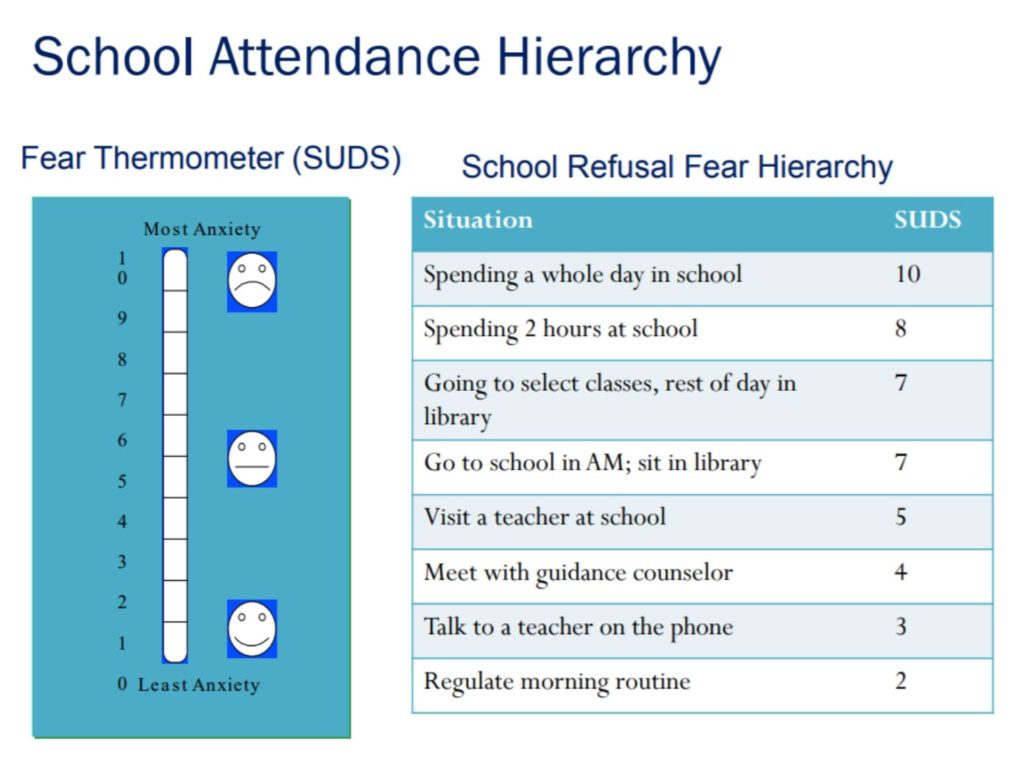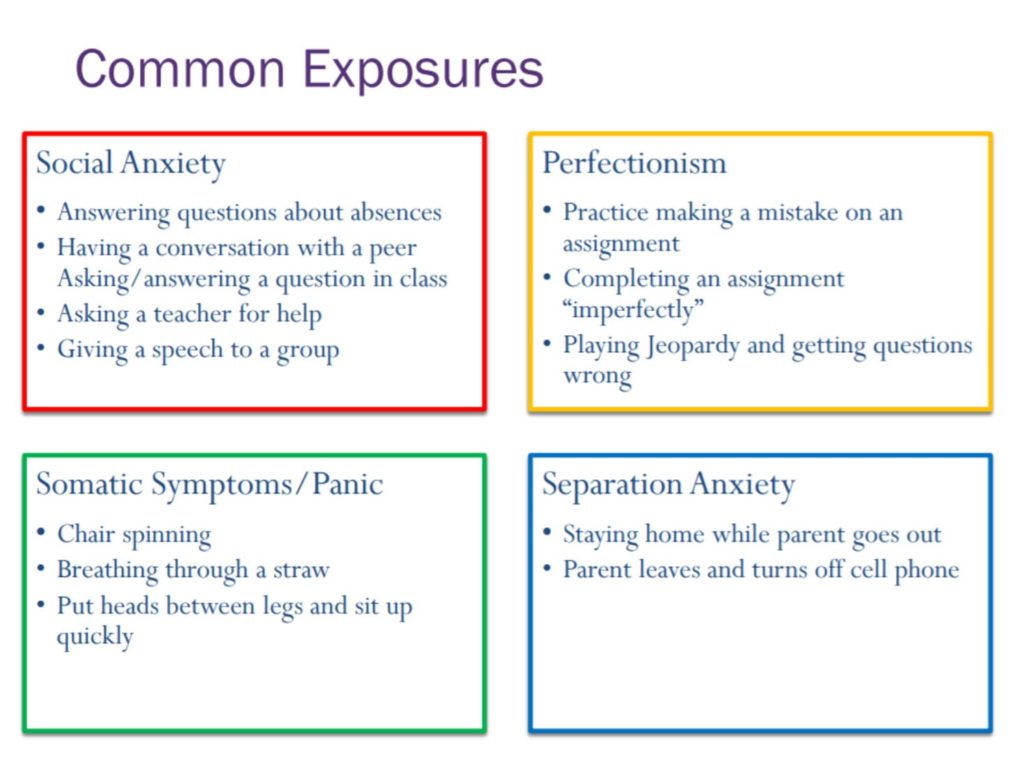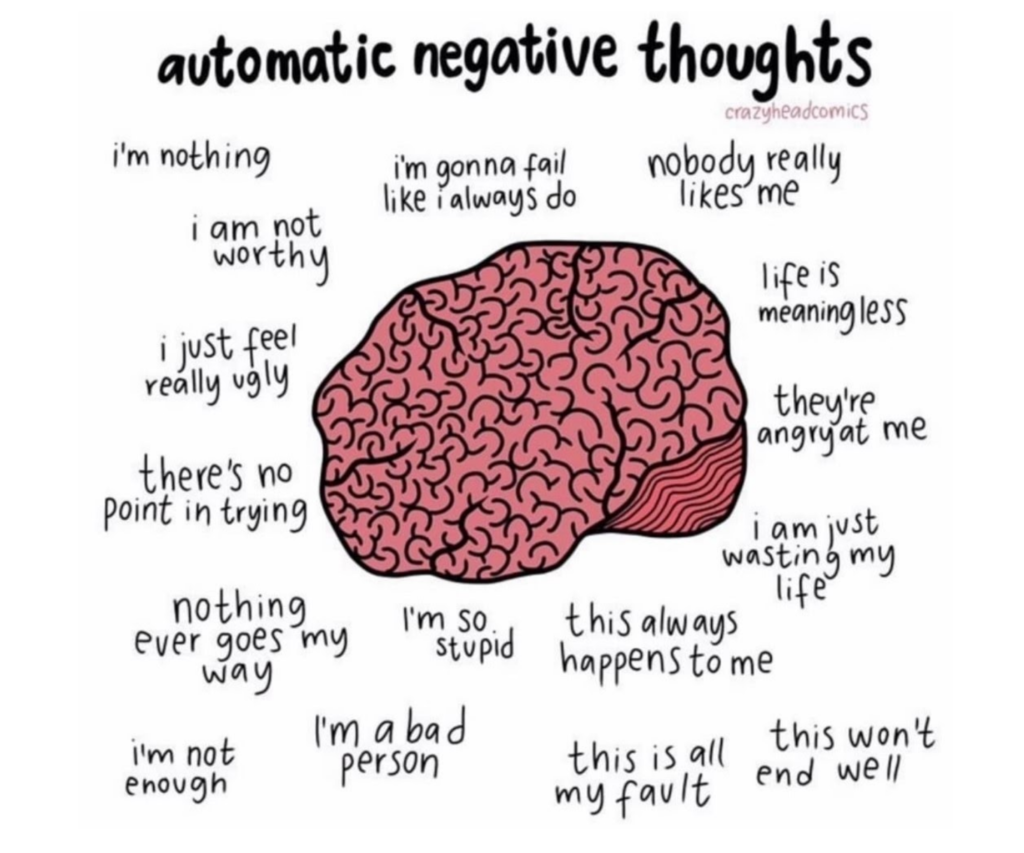It makes sense to seek and consult with a mental health provider (therapist, social worker, psychologist, or psychiatrist) if your child has school avoidance.
They can tell you if your child has any diagnosable mental health disorders that contribute to or cause their school avoidance. They should be able to help your child understand their mental health disorder, possibly what’s causing it, and provide you with a treatment plan to help get your child back to school.
A good therapist should be a partner and guide and agree to communicate with your school as you work with them to help your child. They should be part of your School Avoidance Team.
We are going to focus on the following modes of therapy for school avoidance: CBT, Exposure Therapy, and DBT because they are evidence-based for school avoidance and SPACE Treatment for parents because we believe in its potential to help with school avoidance.

According to clinicians and researchers dedicated to school avoidance, exposure therapy is a first-line treatment that helps kids get back to school and has shown sustainable long-term results.
“In Exposure Therapy, clients are asked to confront the situations they fear, starting with the least frightening situations, mastering them, moving to more difficult situations, mastering them, and so on until the most difficult situations no longer interfere with the client’s life.” *
With the assistance of a trained professional, the child stays in each level of anxiety long enough for the anxiety to decrease.
They learn that they can handle the anxiety from that exposure. Then the child will continue along the path of gradual exposures until they are comfortable being in school again.
Provide experience performing in and managing difficult situations
Practice and refine skills
Gather evidence to refute anxious thoughts
Habituate and tolerate anxiety
Courtesy of Dr. Anne Marie Albano
Unfortunately, exposure therapy hasn’t received much coverage in the mainstream media. And parents and schools sometimes aren’t aware of its value for helping with school avoidance. If you are having trouble finding an experienced exposure therapist; you aren’t crazy; there is a shortage of them. Luckily the mental health community has noticed this void, and many clinicians are currently getting professional training.
Ask them if they do. If the school doesn’t don’t, it’s ok; an experienced school psychologist in your school district should be able to prepare a slow reintegration plan. That will act as a desensitization protocol like exposure therapy. Always have your private mental health professional involved with your school team’s reintegration or exposure plan.
Eventually, your child will get to the point where they are working to enter the school building again. So, you and your school will have to agree on where your child will go their first time back in the school building, what room, with who, for how long? What activity should they be doing? When should academics be reintroduced? And what is the plan for the slow easing into school work? You cannot rush it.
Each school-avoidant child is different, so the timeframes and steps will differ. Sometimes the parent or school is eager to get the student back to class, back to a whole load of academics. Remember, slow and gradual is the way to go.
Each teacher and staff member your child Interacts with should be included in this reintroduction plan. If your child is involved with the intervention team, has a 504 plan, or an Individualized Education Plan, you should consider asking to have the gradual exposure and modifications of their school work (homework too) written into either of these instruments.
This video offers a simple visual understanding of exposure therapy. We recommend that you check it out.
Courtesy of Practical Psychology


Slides above courtesy of Dr. Anne Marie Albano
Courtesy of University of Michigan Medicine
Cognitive Behavioral Therapy (CBT) is a short-term treatment that focuses on teaching clients specific skills. CBT is different from many other therapy approaches. The cognitive model describes how people’s thoughts and perceptions influence their lives.
By helping them identify and evaluate their automatic thoughts, challenge negative thoughts, and shift their thinking emotions to change unwanted behaviors.
These are the dialogue of thoughts that pop into your head all day. They come up suddenly on their own with no effort.” Researchers vary in the estimated amount of thoughts we have a day; 6000-60,000. But no matter the exact number, that’s a heck of a lot of thoughts that affect our feelings, fears, worries, and self-worth.
These are negative automatic thoughts that cause negative distorted thinking, according to Dr. Aaron Beck (considered the creator of CBT in the 1960s). They are either; negative ideas about ourselves, the world, and the future. He discovered that negative thoughts like “I never do anything right” or “I’m such a loser” affected overall happiness, mental health and can even cause depression.
Research estimates 80% of our thoughts are negative, and 95% of these were exactly the same repetitive thoughts as the day before.
Now, consider this;
These baseless worries are a significant source of stress, tension and can cause or contribute to depression and anxiety disorders.

This video from selspace Canada clearly explains how parts of CBT work. It explains automatic thoughts, automatic negative thoughts, and how to challenge them and replace them in a cute, engaging way:
Also known as cognitive distortions; these are ways that our thoughts can become biased. We are constantly interpreting the world around us, and we can generate thoughts that aren’t accurate.
Cognitive distortions happen automatically. We don’t mean to think inaccurately, but unless we learn to notice them, they can have powerful yet invisible effects upon our moods and our lives.
You can see how our thoughts and thinking styles affect us. Hopefully, it gives you insight into how easily these thinking traps could cause school avoidance.
The primary goal in Dialectical Behavioral Therapy is to teach kids/adolescents the skills to more effectively manage their emotions (feelings toward school) and behaviors (avoiding school). In regard to School Avoidance, DBT considers that problematic behavior is a result of problems when a child cannot properly regulate or control their emotions (dysregulation).
The core skills taught in DBT are:
These skills are relevant to kids with school avoidance who avoid negative feelings that cause escape or avoidance.
The skills are usually taught in a skills training group. Therapists often say it’s more like a class than a group.
Some kids with school avoidance will have a hard time entering a group class at first. Usually, through the relationship with the therapist, they can help ease your child into the course. It’s the professional opinion of each DBT clinician to determine if not being able to attend the group will hinder the effectiveness of treatment.
Online groups are sometimes easier for school avoidance kids at first.
The therapist and patient have individual sessions where they tailor specific skills to specific life circumstances to achieve therapeutic goals (getting back to school).
Practitioners of DBT utilize the following Components as part of their Treatment Plan:
DBT can be hard to understand the first few times you read about it. This video explains DBT simply, and the video isn’t ho-hum boring. Presented by Dr. Esme Shaller, UCSF Department of Psychiatry and Behavioral Sciences, clinical director of child and adolescent outpatient services at Langley Porter Psychiatric Hospital and Clinics.
SPACE is a parent-based treatment program for children and adolescents with anxiety, OCD, and related problems. The research supporting SPACE has been ongoing for about ten years. It is a new approach, and many clinicians and parents are very excited to learn how to use it.
Parents who participate in SPACE will learn skills and tools to help their children overcome anxiety, OCD, or related problems. The treatment focuses on parents’ changes to their own behavior; they do not need to make their child change. The parents participate in SPACE treatment sessions, and in most cases, the child or adolescent does not need to attend the treatment sessions.
SPACE was developed by Dr. Eli Lebowitz at the Yale Child Study Center and has been tested and found to be effective in randomized controlled clinical trials. Parents of children with anxiety-based school avoidance have read Dr. Lebowitz’s book and will be providing feedback. A school in Perth, Australia, is also piloting a program utilizing SPACE, and we will share the results when they come in later this Fall.
When SPACE treatment is successful, children feel less anxious and function better following treatment.
Disclaimer: This site is designed by School Avoidance Alliance to assist parents, family, friends, caregivers, educators, advocates, and other professionals involved with helping children and finding resources to understand, help and cope with school avoidance, as well as to increase public awareness regarding school avoidance. The contents of this website are presented for informational and educational purposes only. Nothing on this website is to be construed as professional advice on medical, legal, technical, or therapeutic matters. By accessing and using the information on this site, you agree to waive any rights to hold the site developer(s), or any individual and/or group associated with this site, liable for any damage that may result from the use of the information presented.
Unfortunately only a small percentage of school professionals, therapists, educational advocates and policy makers understand school avoidance best practices. So, you must become the expert to ensure your child is getting:
The time passing slowly without progress is the worst feeling. It wouldn’t have taken five years of suffering and uncertainty if I had this expert guidance during my son’s school avoidance. We would have saved $29,000 in lawyer fees and $69,000 for private schools.
